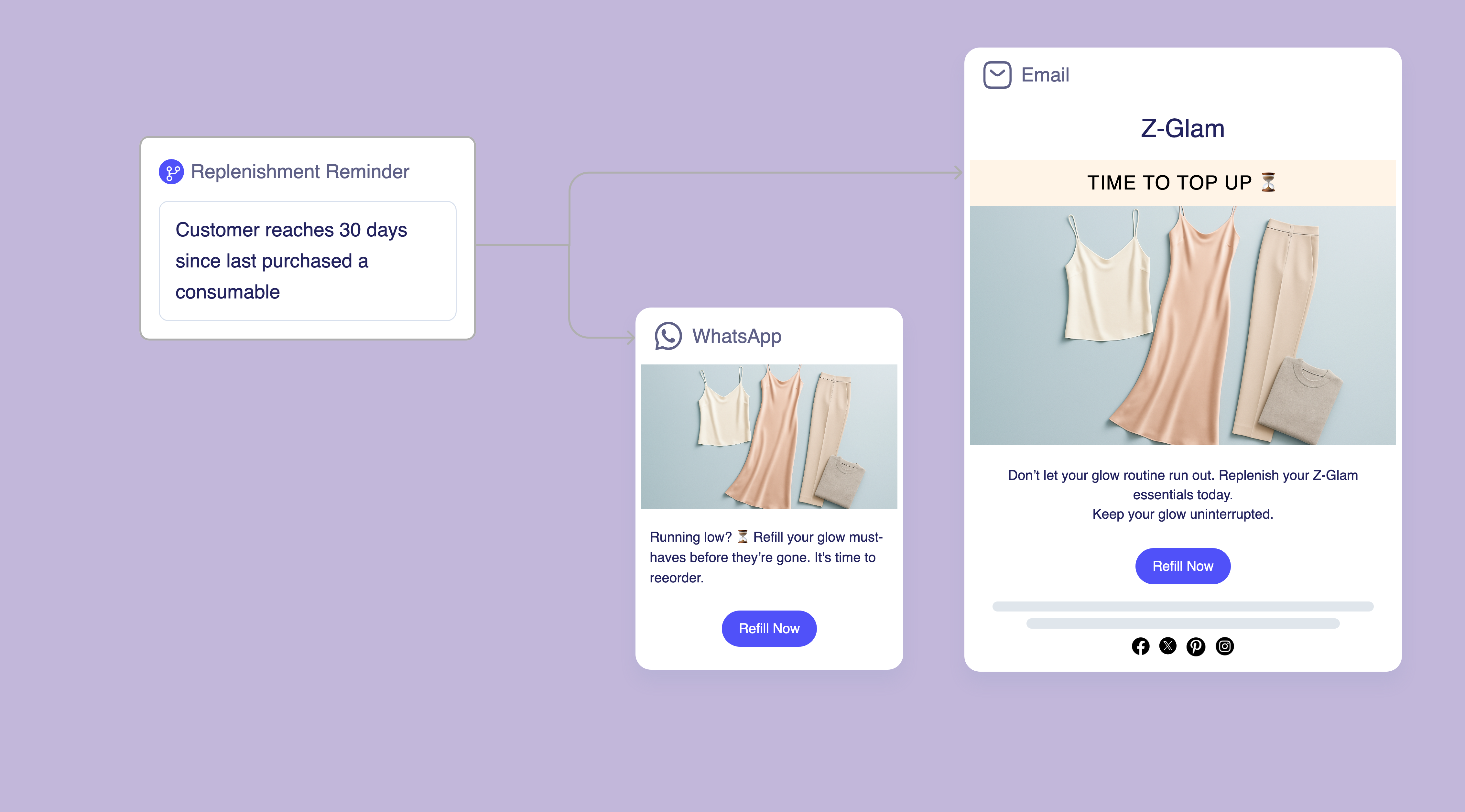
Replenishment Campaigns
Increase revenue per user by prompting customers to restock consumable products when their supply is running low.

What are Replenishment Campaigns?
Replenishment Campaigns are marketing strategies that target users who bought consumables by segmenting them based on product type and estimated usage cycle, then triggering reminders to restock items like skincare, supplements, or food X days after estimated product usage ends. This revenue strategy focuses on predictable repeat purchases through usage-based timing.
Why Replenishment Campaigns matter?

Challenges

Opportunities
Outcomes
Higher Repeat Purchase Rates
Increased Revenue Per User
Better Customer Retention
Who is it for?
Audience
Exclusions
How it plays out
A sample sequence for this use case.
Running low? We've got you. Time to restock your [Product] — reorder now & never run out → [Restock Now]
Almost time to refill your [Product], [Name]. Reorder now for seamless delivery → [Buy Now]
Don't run out! Your [Product] supply should be running low — grab your refill → [Order Again]
Final reminder: Avoid the empty bottle blues — restock your essentials → [Never Run Out]
Best Practices
- Calculate timing based on actual product usage cycles rather than generic timeframes for accurate restocking prompts.
- Send reminders before complete depletion to prevent usage gaps that might lead to competitor trials.
- Offer subscription options or bulk purchasing to make regular replenishment more convenient and cost-effective.
Replenishment Campaigns Examples & Prompts
Channel Examples
Automate with Zenie Prompts
Tracking usage cycles for different consumable products requires product knowledge and timing precision. With Zenie, you can automatically trigger consumable reorder campaigns based on estimated usage.
Explore Similar eCommerce Marketing Strategies
FAQs
Why are replenishment campaigns important?
They ensure customers never run out of their essentials while driving predictable, recurring revenue for your brand. For consumables, consistency is key to results — and replenishment makes sure customers stay on track.
When should replenishment reminders be sent?
Timing depends on product lifecycle. For 30-day skincare, send around day 25. For supplements or haircare, day 45–60 works best.
How can replenishment campaigns be personalized?
Reference the exact product purchased and its benefits, and adjust timing based on average usage cycles. Personalized reminders feel helpful rather than generic.
Do replenishment reminders need discounts?
Not always. Many customers reorder simply to avoid running out. However, pairing reminders with small loyalty rewards or subscription offers can boost conversions.
How do replenishment campaigns impact revenue?
They shorten reorder times, increase repeat purchase rates, and grow customer lifetime value. Over time, replenishment becomes a core driver of predictable growth for consumable brands.


